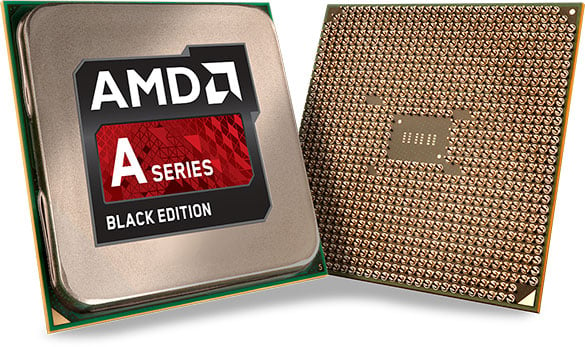AMD Kaveri Arrives: A8-7600 APU Review
Introduction and Specifications
Way back in 2006, after the ATI acquisition, AMD laid out its Fusion initiative and future plans to integrate a CPU and GPU onto the same processor die. The ultimate goal of Fusion was to seamlessly combine CPU and GPU resources into a single, cohesive compute engine equally adept at handling serial and highly parallel workloads. At the time, the idea seemed ambitious, but history has shown that more and more external resources have consistently been brought onto the CPU die (memory controllers, IO hub, etc.) and graphics would be no different.
Since then, both Intel and AMD have quite successfully combined CPU and GPU engines onto single chips, but up to this point they have tended to work as autonomous islands. The CPU and GPU share some resources, but not a single memory pool. That changes today though, with the official launch of AMD’s Kaveri-based APUs, the first APUs to truly support heterogeneous computing.
We’ve been talking about Kaveri for quite some time and have quite a bit of content available related to today’s launch. We’d suggest checking out this link for a list of all of the Kaveri-related coverage we’ve got available. In this piece, we’ll finally be able to show you some hard numbers, using one of the more interesting SKUs in the initial AMD Kaveri-based product line-up - the AMD A8-7600 APU...

AMD A-Series APU In Socket FM2+ Flavor
|
| Stream Processors | Up to 512 |
| Core Clock | Up to 3.7/4.0GHz |
| Graphics Clock | Up to 720MHz |
| Memory Support | Up to 2400MHz w/ AMP |
| Typical TDP |
45W, 65W, 95W |
| Chipset Compatibility | A88X, A78, A55 |
| HSA Heterogeneous Computing | Yes |
| AMD TrueAudio Technology | Yes |
| API Support |
DirectX 11.2, Mantle |
| Up to 4 “Steamroller” x86 computing cores
Up to 8 GCN-based GPU cores
HSA Hetereogeneous Computing
|
FM2+ Platform
AMD TrueAudio Technology
Unified Video Decoder and Compression Engine
|
Before we get to the benchmarks, we’ve got some features and specifications to share. As you can see in the table above (and as we’ve detailed many times in the past), Kaveri combines AMD’s latest Steamroller CPU microarchitecture with a GCN-based graphics engine, with up to 512 stream processors. Peak CPU clocks will vary depending on model, but the graphics clock maxes out at 720MHz. These AMD desktop-targeted APUs will carry TDPs of 45W – 95W.

AMD’s goal with Kaveri was to target virtually every market segment, from micro-servers all the way on up to high-end desktops. The architecture was designed with performance-per-watt in mind and some SKUs (like the A8-7600 we’ll be showing you here) offer scalable TDPs. The A8-7600 can actually be configured to operate with 45w or 65w TDPs.
Above is a funky Kaveri “die shot” that looks somewhat like a cross between a die map and blurred actual die shot. Regardless, it illustrates where all of the major chip components reside on the APU. Roughly 47% of Kaveri’s die (the large, orange/copper looking block) is dedicated to its GPU. Along the top of this image are the chip's PCI Express and display interface blocks, at the bottom (and the spike about in the middle) is the DDR3 phy and UNB, and to the right are the dual, dual-core X86 Steamroller CPU modules.
All told, Kaveri is comprised of approximately 2.41 billion transistors and has a die size of 245mm2. That’s about a billion more transistors than Richland, with roughly the same die area. AMD was able to accomplish this feat by working with Global Foundries on a new 28nm SHP manufacturing process, that’s less CPU-optimized but offered better area utilization for graphics. Using this 28nm SHP process, which employs bulk silicon, forced AMD to sacrifice some CPU frequency at the high-end of the TDP scale, but with better power characteristics at the sweet spot.







